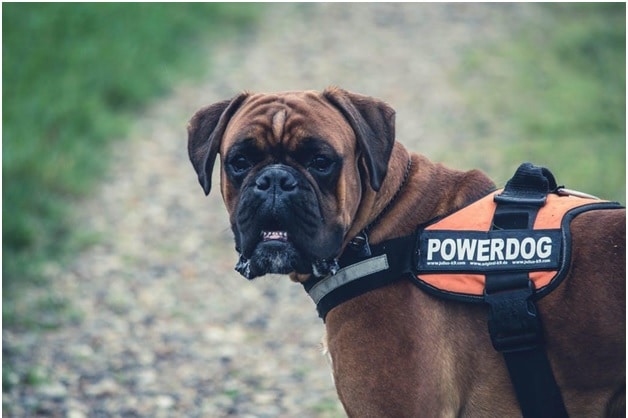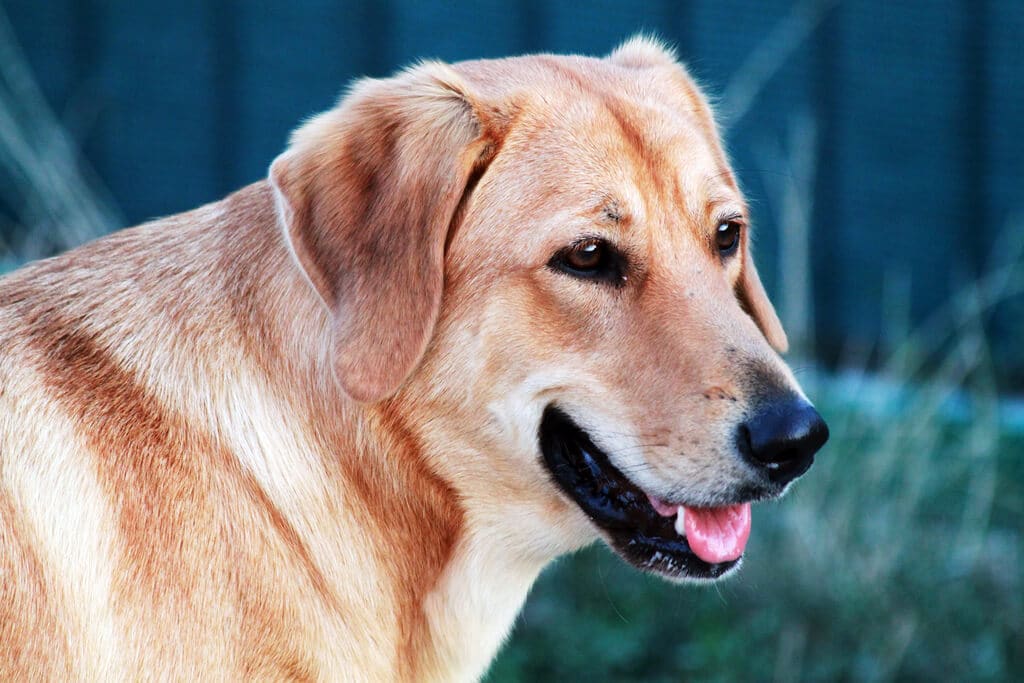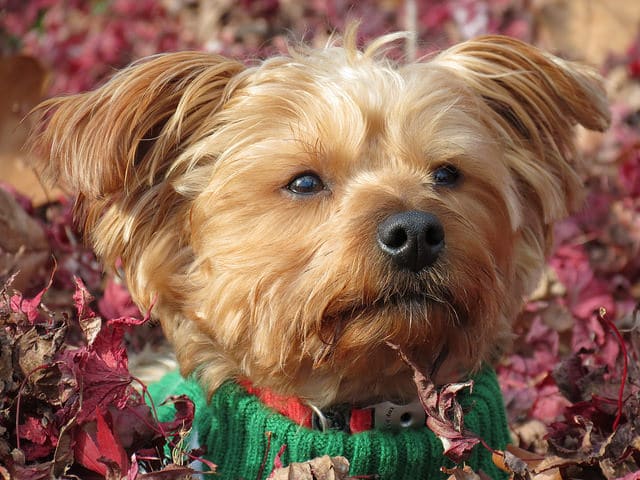Approximately 7 out of 10 households in America have a pet (I have written in this post). They not only offer companionship and reduce loneliness, but they also are natural mood enhancers and as per current research can predict or sense things before they happen. Other people keep pets for security purposes.
See also:
Puppies unlike adult dogs are far more delicate and require a lot of attention and care. This includes diet, vaccinations and health care, sleep and toilet training among other things. Before acquiring a pet it’s good to familiarize yourself with how to care for these fur babies.
Below we discuss a few pointers to guide you if you are thinking of acquiring or adopting a 10 week old puppy. We have to point out however that taking care of a puppy or any pet for that matter is a commitment and requires a lot of patience especially during the first few weeks of life.
Feeding guide
At 10 weeks of age, a puppy should be on soft solid food either commercial puppy food or on a raw diet. Puppies are normally weaned at 4 weeks of age. The diet especially if it’s commercial should of high quality, highly nutritious and easily digestible. One should be keen to read through the ingredients and labels and avoid food with fillers and additives which are often added to make a puppy feel full but offer no nutritional value.
Seeking advice from a veterinarian on the best brands for puppy food is always a good idea. If feeding a raw diet, a balanced diet is imperative as well.
How much to feed a 10-week old puppy?
Puppies should be fed approximately 3 to 4 times a day or small portions throughout the day up until they are 14 to 18 weeks old where they can switch to two meals a day unless advised otherwise by your veterinarian. This is because their bodies are growing fast and their metabolism is high therefore requiring more food and energy.
10-week old puppy feeding schedule
Their first meal can be 7 am, at noon for lunch and the last meal in the evening at 5 p.m. It’s a great idea for them to have their last meal of the day early to give the body time to digest and also to give them ample time to defecate before turning in for their nap at night. Care should, however, be taken not to overfeed them as it can lead to stomach upset, constipation, diarrhea or indigestion.
Water should be provided ad lib at all times to keep them hydrated and to assist in digestion. Milk especially cow milk should be avoided. Dogs are naturally lactose intolerant and feeding them dairy products can cause stomach upsets.
Owners should also be mindful not to change the puppy’s diet abruptly to avoid stomach upsets. If one wishes to switch up the diet it should be done slowly in small portions over time. Changing the diet the diet can also condition them to be picky eaters which can cause dietary problems later on when they become fully grown adult dogs.
Puppies are indiscriminate eaters can nibble on garbage and other harmful indigestible objects which cause obstructions in the gut. Owners should always be keen. In case of instances where the puppy feels insecure and anxious, one can opt for them to eat in their crate where they feel safe and secure. It’s also training them to wait before going for a toilet break.
Grooming
Grooming helps keep off parasites which transmit harmful diseases but also infectious microbes and odors. Puppies should have their first grooming session before 16 weeks of age. Later than this often proves difficult as at this time the majority of dogs are harder to train, have formed aggressive tendencies and harder to build trust especially when handled in ways they are not used to.
Grooming should be initiated at home first before scheduling a professional grooming session. This allows the puppy to acclimatize to being handled differently. This includes massaging or playing with their paws especially between their toes, ears, and tush. One can also brush their hair gently.
The first grooming session should be short and pleasant as puppies can get frightened by the noise of hair clippers, noisy dyers and being looped on the grooming table. This is because puppies are easily stressed and a bad first experience can inform future agreeability during grooming sessions.
Only basic grooming should be performed on the first session. This includes a warm gentle bath, gentle blow dry, light hair brushing, nail trimming ear cleaning and a light trim. The groomer should be gentle to keep the puppy as relaxed as possible. It’s also good to slowly introduce hair scissors and other grooming appliances especially those used around the face slowly.
Two to three grooming sessions are usually enough for the puppy to get acclimatized to grooming. The groomer should strive to make the experience very pleasant which inevitably conditions the puppy’s brain to associate grooming as a fun and enjoyable experience.
Sleep schedule
It’s good to put your pup on a schedule to make it easy for everyone at home. It’s good to take time off during the first few days of the pup’s arrival to spend quality time. This allows you to establish a bond as well as a good sleep schedule.
How much should a 10 week old puppy sleep?
Puppies should be encouraged to sleep in between play sessions or an hour after eating. Sleeping time should always be at the same time every day inside their crate or bed. Puppies at this age normally sleep for approximately 18 to 20 hours a day.
The puppy house
This may be a kennel for outdoor dogs or a crate or bed for indoor dogs. When acquiring or adopting a puppy it’s good to provide a safe, warm and comfortable space for them to retire to when tired, stressed, anxious or when they want to take a nap.
Crates or dog beds should have round edges to avoid injury. It’s important to keep the area clean with regular disinfection to keep harmful parasites and microbes that pass on infections.
Apart from providing a place to retire to, crates help in toilet training. They also provide a safe place to keep your dog while you are away. They also offer a safe place for recovery especially if your pup has had a major surgery and needs ample rest and minimal movement.
Puppy Training
Playing with your puppy
This not only ensures good physical and social development of your puppy but provides a good bonding opportunity. It helps one to get to know their puppy’s temperament, likes, dislikes, and Choose a time when the puppy is energetic.
Avoid initiating play immediately after meals as it can lead to a life-threatening condition called gastric torsion where the stomach twists on itself. It also prevents the puppy from vomiting or getting an upset stomach. Ideally, wait approximately an hour or two after meals. If playing with children, the sessions should be supervised.
At times kids can be a bit rough which may cause the puppy to become aggressive and not enjoy future play times. It’s also important to get to know which games your puppy loves. This may take a little bit of experimenting and patience. You want a game that greatly stimulates your puppy and offers good exercise as well.
Playtime also offers a great opportunity to introduce simple commands which one can build on when obedience training commences. Simple commands such as “Sit” or “Stay” can come in handy during play time. This should be followed by a reward either a treat, more attention from the owner or more play time.
Care should be taken not to overtire the puppy as much as they are so energetic. At this age, they are still growing and too much play may injure there growing bone and ligaments as they are not strong enough.
Toilet training
This also requires patience and should be done repeatedly over time until your puppy is fully trained to go outdoors. Puppies go at least 12 times a day and should be allowed toilet breaks at least every two hours especially after feeding, sleeping or playing.
Dogs appear anxious, walk around in circles or sniff around corners when they want a toilet break. One can opt to start with newspaper training. This involves training your dog to go to a newspaper. Always praise and lavish them with attention when they do go on the paper. If not ignore them but don’t shout or reprimand them. As they get used to it, slowly move the newspaper towards the door and finally outside. It’s a valuable trick to place a soiled newspaper outside.
Dogs normally follow their scent and will probably go where the soiled newspaper is. With time you can finally get rid of the newspaper and allow them to go while outdoors. Always remember to praise them for good behavior. One can also opt to crate train. This trains them to wait in their crate before being released to go outside.
However, this method will require you let them outside every two hours especially after eating. If a puppy goes indoors make sure to thoroughly clean the area to remove the scent. A stated above dogs can smell their scent and will probably go at the same spot again.
If your puppy goes while indoors please do not reprimand him or her as many at times they may not be aware of why they are being reprimanded and may turn aggressive unless if caught on the act.
Socializing your puppy
Puppies need to be socialized to avoid aggression towards other dogs as well as human. One can opt to take them to a nearby dog park or invite a friend with a puppy for a playdate. This should be done between 7 to 4 months of age. It helps them to be able to interact with other dogs, to be confident at play and shapes their personality.
It also helps them to get acclimatized to different environments. Most socialization experiences start from the breeder or shelter one acquires a puppy from. Gentle handling during the first weeks of life and allowing the puppy to explore his/her environment at this time sets the pace. Expose the puppy to different places, people smells and sights slowly.
Puppy classes not only offer an opportunity to learn obedience training but it also offers a place where they can interact with other puppies and people. This, however, should be done once they have started receiving their vaccinations
Separation anxiety
This occurs when puppies are left alone for long periods of time. They usually get distressed and appear anxious, pee and poop when the owner is about to leave or become destructive around the house. Crate training helps relieve separation anxiety. It also worthwhile to leave your dog with chew toys while away to keep them distracted as you leave. Taking them for a walk before leaving the house helps them associate your leaving with something fun.
Vaccinations and Health check-ups
At 10 weeks of age, puppies are required to have received their first two sets of shots as well as deworming. At 6 weeks puppies receive parvovirus vaccines while at 9 weeks they receive DHPP (distemper, hepatitis, parvovirus, and leptospirosis). These are core vaccines and should, therefore, be administered.
Deworming should start as from 2 weeks of age until 1 month old upon which it should continue once every month until 3 months. As from 3 months, puppies should be dewormed once every 3 months.
Conclusion
The first few weeks of life is the most crucial time to train and provide care to your puppy as it sets the pace for his or her adulthood. A good dietary plan, scheduled veterinary checks, and good training ensure puppies grow into lovable and nurtured dogs. It, however, requires commitment from the owner’s side and a lot of patience.
 Best Dog Food for Boxers
Best Dog Food for Boxers The 7 Best Dog Food for Labs [2019]
The 7 Best Dog Food for Labs [2019] 10 Rules to Help Care for Your Dog After Surgery
10 Rules to Help Care for Your Dog After Surgery How To Groom A Morkie
How To Groom A Morkie FDA Recall Alert: Eukanuba Dog Foods Review
FDA Recall Alert: Eukanuba Dog Foods Review
Your article was very helpful.
The part of your article that talks about socializing and exposing a puppy to different environments really helped to read. One of the biggest reasons why my relatives avoid getting pets is because of how aggressive they can get. While I understand them, I also wanted to show them there are ways that pets can be friendly. If I follow your tips, I’m sure that any puppy I find and adopt will be able to behave themselves and not be aggressive towards my relatives.
What is the best way to change a 10 week old puppy from a raw diet to a kibble one